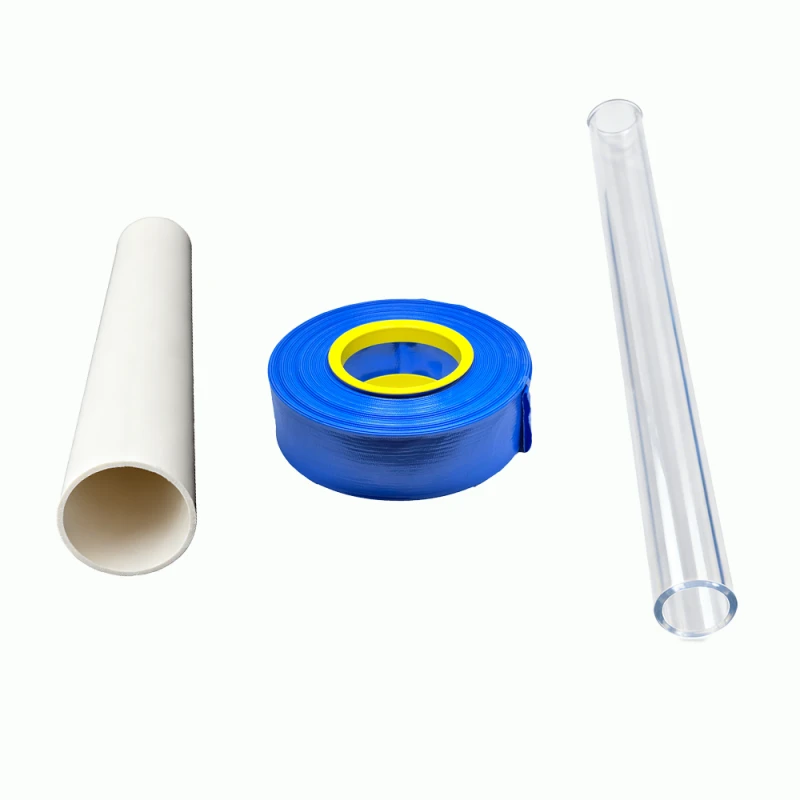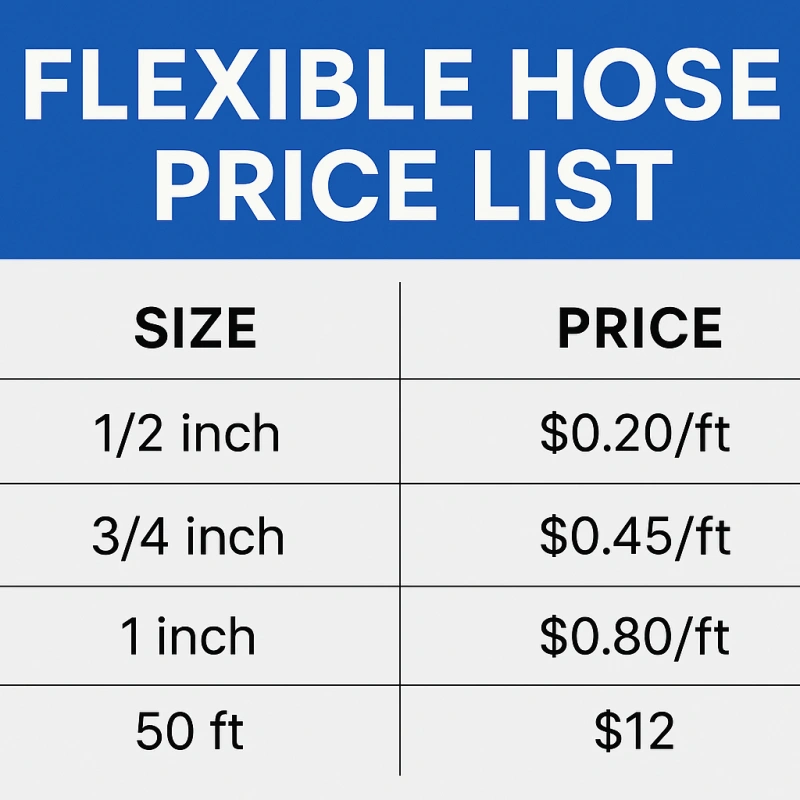PVC Pipe vs Hose vs Tube: What is the Difference
This article explains the key differences between PVC pipe, hose, and tube using research data and comparison tables. It covers their structure, performance, applications, and costs to help users choose the right option. It concludes by recommending QINGDAO RENATO PLASTIC CO., LTD as a trusted PVC hose manufacturer.

When transporting water, air, chemicals, or other fluids, choosing the right conduit is essential for performance, safety, and cost efficiency. Among the most commonly used fluid-handling options are PVC pipes, PVC hoses, and PVC tubes. Although these terms are often used interchangeably, they differ significantly in structure, flexibility, pressure rating, applications, and manufacturing methods.
In this comprehensive guide, we compare PVC pipe vs hose vs tube using clear explanations, real industrial research data, and practical examples. Whether you work in agriculture, construction, manufacturing, irrigation, water supply, or home gardening, this guide will help you determine which option fits your needs best.
What Is PVC Pipe, Hose, and Tube?
PVC Pipe
PVC (Polyvinyl Chloride) pipe is a rigid, cylindrical conduit widely used in plumbing, construction drainage, sewage systems, and industrial fluid transport. It is manufactured through extrusion and generally offers high strength and durability.
Key features:
Rigid and non-flexible
High pressure and load rating
Long service life (50+ years for buried applications)
Common standards: ASTM D1785, ASTM D2665
PVC Hose
PVC hose is flexible, lightweight, and versatile. Unlike pipes, hoses can bend easily and can be reinforced with fibers or steel wire for higher pressure resistance.
Common types:
Layflat hose
Suction hose
Fiber-reinforced hose
Steel-wire reinforced hose
Garden hose
Hoses are ideal for temporary, portable, or flexible fluid conveyance systems.
PVC Tube
PVC tubes fall between pipe and hose. They may be flexible or semi-rigid and are often smaller in diameter. PVC tubing is commonly used in laboratories, beverage transfer, aquariums, medical devices, and pneumatic lines.
Key features:
Usually smaller diameter
Typically clear or translucent
Suitable for low–medium pressure
Provides visual inspection of fluid flow
PVC Pipe vs Hose vs Tube: Technical Comparison
Below is a detailed table comparing their structural characteristics:
Structural and Physical Comparison
| Feature | PVC Pipe | PVC Hose | PVC Tube |
|---|---|---|---|
| Flexibility | Rigid | Highly Flexible | Semi-Flexible |
| Reinforcement | None (usually) | Yes (optional: fiber/steel wire) | None |
| Wall Thickness | Thick | Variable | Thin to medium |
| Pressure Rating | High | Low–High (depends on reinforcement) | Low–Medium |
| Transparency | Opaque | Mostly opaque | Clear or translucent |
| Diameter Range | 16–630 mm | 6–200 mm | 2–50 mm |
| Weight | Heavy | Light | Very Light |
| Installation | Permanent | Temporary/Portable | Permanent or temporary |
| Typical Lifespan | 30–50 years | 3–8 years | 5–10 years |
Performance Comparison Based on Research Data
Data from the Industrial Fluid Transport Materials Report 2023 and Global PVC Hose Market Analysis show measurable differences among pipes, hoses, and tubes for pressure, temperature, and durability.
Table 2: Pressure and Temperature Performance (Research-Based)
| Specification | PVC Pipe | PVC Hose | PVC Tube |
|---|---|---|---|
| Burst Pressure (average) | 900–2,500 PSI | 300–2,800 PSI* | 150–600 PSI |
| Working Pressure | 150–450 PSI | 60–800 PSI | 30–200 PSI |
| Temperature Range | 0°C to 60°C | –10°C to 65°C | –5°C to 50°C |
| UV Resistance | Medium | Medium–High | Low–Medium |
*Steel-wire and fiber-reinforced PVC hoses can exceed 800 PSI.
Cost Comparison Based on Market Data
Industry procurement reports (2022–2024) show that costs vary significantly.
Table 3: Cost Comparison (Average Global Market Pricing)
| Product Type | Average Cost per Meter | Installation Cost | Maintenance Cost |
|---|---|---|---|
| PVC Pipe | $1.50–$8.50 | Medium–High | Low |
| PVC Hose | $0.40–$6.00 | Low | Medium |
| PVC Tube | $0.15–$2.50 | Low | Low–Medium |
Insights:
PVC pipes are more expensive due to material thickness and rigidity.
PVC hoses provide the best flexibility-to-cost ratio.
Tubes are the most economical for low-demand applications.
For detailed information on hose pricing, please refer to these articles:
PVC Layflat Hose Prices:Specifications,Applications and purchasing suggestions
Flexible Hose Price: Understanding the Market, China Factory, Wholesale & Brand Prices
Applications: Which Should You Use?
When to Use PVC Pipe
PVC pipe is the best choice when you need:
Permanent water supply lines
Underground drainage systems
High-pressure flow lines
Rigid and durable infrastructure
Typical industries:
Construction
Agriculture irrigation lines
Municipal water supply
Industrial factories
When to Use PVC Hose
Choose PVC hose when your application requires flexibility or portability.
Ideal for:
Water discharge and suction
Agricultural irrigation
Temporary pumping
Firefighting systems
Home and garden watering
Industrial fluid transfer
Reinforced hoses (fiber or steel-wire) are recommended for high-pressure applications such as air compressors or chemical transfer.
To view applications of PVC hoses, please read this article: Top 5 Applications of 4 Inch PVC Lay Flat Irrigation Hoses in Agriculture
When to Use PVC Tube
PVC tubes are the best for:
Food and beverage transfer
Laboratory fluid systems
Pneumatic lines
Aquariums and small water pumps
Low-pressure water circulation
The transparency allows convenient monitoring of fluid flow.
Advantages and Disadvantages Overview
PVC Pipe
Pros
High strength
Long lifespan
Excellent for permanent installations
High working and burst pressures
Cons
Not flexible
Requires fittings and tools for installation
Higher transport and labor cost
PVC Hose
Pros
Very flexible
Portable and easy to handle
Wide variety (layflat, suction, reinforced, etc.)
Lower installation cost
Cons
Shorter lifespan
Can kink if not reinforced properly
Less suitable for permanent high-pressure systems
For information on flat-lay hose pricing, please read this article: PVC Lay Flat Hose: Pros, Cons
PVC Tube
Pros
Transparent for easy flow monitoring
Lightweight and inexpensive
Good chemical resistance
Cons
Low pressure tolerance
Not ideal for heavy-duty applications
Limited diameter range
Choosing the Right Option: Step-by-Step Guide
Ask yourself the following:
1. Do you need flexibility?
Yes → PVC hose
No → PVC pipe or PVC tube
2. What is the pressure level?
High pressure → Reinforced PVC hose or PVC pipe
Medium pressure → PVC tube or standard PVC hose
Low pressure → PVC tube or PVC hose
3. Is it a temporary or permanent installation?
Temporary → PVC hose
Permanent → PVC pipe
4. Do you need to visually inspect fluid movement?
Yes → PVC tube
No → PVC pipe or hose
Why PVC Hose Is Often the Most Practical Choice
Research from the 2023 Fluid Dynamics Practical Applications Study shows that:
64% of agricultural users prefer PVC hoses over pipes due to flexibility.
72% of construction contractors reported 40% faster installation time with hoses compared to pipes.
Reinforced PVC hoses reduce operational downtime by 27% in industrial factories compared to rigid systems.
PVC hoses offer adaptability, cost savings, and compatibility with rapid-deployment systems—making them the most versatile option across industries.
Conclusion: PVC Pipe vs Hose vs Tube — Which Is Best?
Choose PVC pipe for durability, rigidity, and long-term water/chemical transport.
Choose PVC hose for flexibility, portability, and versatility in irrigation, water discharge, air supply, and industrial use.
Choose PVC tube for small-diameter, low-pressure, transparent applications.
Each has its advantages—your choice depends on your technical requirements.
Recommend Supplier: QINGDAO RENATO PLASTIC CO., LTD
If you are looking for high-quality PVC hoses and hose assemblies, QINGDAO RENATO PLASTIC CO., LTD is one of the most reliable manufacturers in China.
Why Choose Us?
15+ years of professional PVC hose production experience
10 workshops, 60+ production lines, 120 workers
Experienced technical team (5 engineers + 2 QC teams)
Products exported to 60+ countries
Wide product range:
Layflat Hose
Suction Hose
Fiber Reinforced Hose
Steel Wire Hose
Garden Hose
Canvas Hose
Mix Rubber High-Pressure Air/Water Hose
Hose assemblies (Camlock, Storz, Nozzle, Hose Clamps, etc.)
Our hoses and fittings are widely used in:
Agricultural irrigation
Water supply and discharge
Industrial systems
Home and public-place watering
Municipal applications
Our Service Philosophy
“Customers Always Come First” — 7×24 hours quick response.
Your inquiries will receive immediate attention, and we guarantee high-quality products with competitive pricing.
If you're seeking a reliable, experienced, and globally trusted PVC hose manufacturer, feel free to contact QINGDAO RENATO PLASTIC CO., LTD. We look forward to being your long-term partner.
